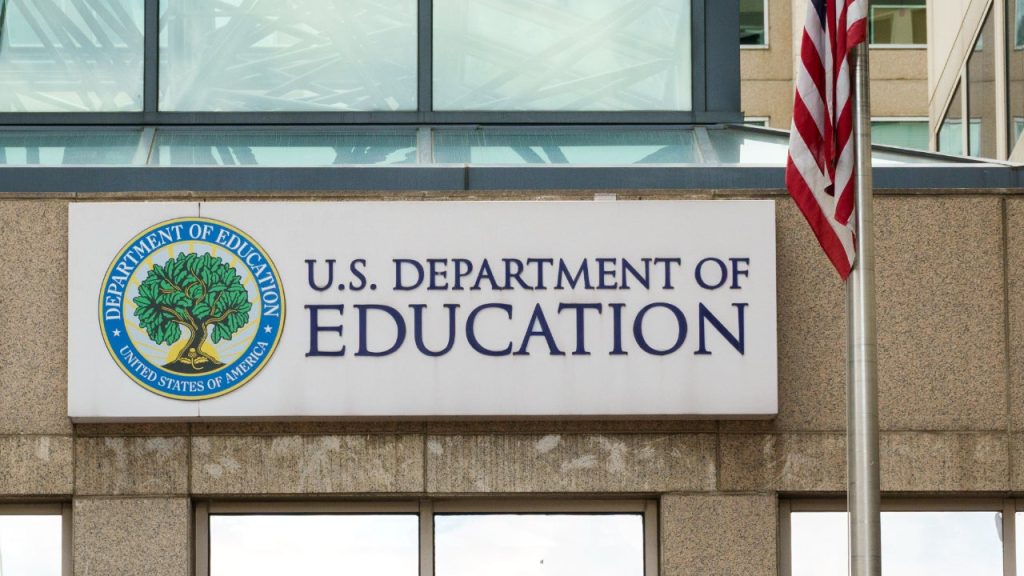The study isn’t the only evidence that the department is struggling to keep up. On May 15, the ED released its first status report on the state of income-driven repayment plan applications. The report showed that just four percent of IDR applications were processed, with almost 2 million still pending as of April 30, 2025.
What these two news items mean for borrowers
The Department of Education handles the federal student aid program, which includes processing the Free Application for Student Aid (FAFSA), disbursing federal aid funds and managing the student loan portfolio. Reinstating terminated employees should mean more staff members to get through applications and help with loan management. However, there’s no guarantee all employees will return. Many may have found other employment in the two months since being laid off. And the department was already struggling to keep up with its duties with a full workforce, meaning borrowers should still expect delays.
If you’re planning on applying for federal aid or an income-driven repayment plan, the time to do so is now. While the FAFSA deadline for the 2025-26 academic year isn’t until June 2026, the earlier you apply, the better. Aside from the expected delays, federal, state and institutional aid programs are on a first-come, first-served basis.
If you’re already in IDR and need to recertify your income, you should have received a notice that your deadline was extended to 2026. If not, contact your service right away to learn your new deadline date.
House passes bill that could slash student loan programs
While the court ruling was a setback for the Trump administration, it saw a major win with the House narrowly passing a reconciliation bill the same day. Part of the bill targets the federal student loan program, proposing sweeping changes to loan limits, repayment plans, forgiveness programs and tax liability.
Key provisions for federal student aid include:
- Eliminating Direct PLUS loans for graduate students and parents of students
- Setting max aggregate loan amounts to $50,000 undergrad, $100,000 for graduate school and $150,000 for professional programs.
- Eliminating SAVE, PAYE and ICR and replacing them with the new Repayment Assistance Plan (RAP), making only two income-driven repayment options available to new borrowers.
- Making student loan forgiveness under IDR taxable.
- Excluding medical or dental residency from qualifying employment time for PSLF.
The bill passed by a 215-214 vote and now goes to the Senate for consideration. Experts predict the bill will be met with resistance and undergo changes before it clears the Senate. Once cleared, it will go back to the House to either pass the bill or rework it yet again for Senate consideration. While it’s hard to know when the bill will pass and what it will look like when it does, Republicans have set a deadline for July 4, 2025.
What this means for borrowers
Eliminating PLUS loans and capping loan limits will likely make private student loans necessary for students who would otherwise get by with federal student loans alone. Private student loans may come with higher rates, fewer repayment options and minimum credit requirements. This features can make repayment more difficult, especially for students who rely on federal aid for expensive degree programs, like MBA programs, law school or medical school.
It’s important to remember that the bill is not yet law and its provisions, including the ones listed above, may change. As this and several other student loan bills pass through legislation, borrowers should continue to make their monthly payments as usual and stay on top of student loan news. Borrowers may want to start planning now for higher payments and the possibility they’ll need to switch repayment plans.
Read the full article here
On May 22, a federal judge temporarily blocked President Donald Trump’s plans to dismantle the Department of Education by ordering the ED to reinstate recently-terminated staff members. The ruling coincides with a new study revealing the negative impact a reduced ED workforce has had on student loan borrowers.
As the future of the department hangs in the balance, so does the federal student aid program as we know it today. The day of the ruling, the House passed a reconciliation bill that may drastically change federal student loans for current and future borrowers. The bill now sits with the Senate for consideration.
Judge reverses mass layoffs at Department of Education
Last week, U.S. District Judge Myong Joun placed a temporary injunction against Trump’s “reduction in force” (RIF) affecting more than half of the ED’s staff, ordering the ED to reinstate terminated employees. In March, more than 1,300 Department of Education staffers were laid off and, shortly after, the president signed an executive order to close the ED.
Joun’s ruling comes after several school districts, education groups and state attorneys general filed lawsuits claiming the layoffs would impair the department’s ability to fulfill its duties, including overseeing the student aid program.
“Prior to the [reduction in force], the department was already struggling to meet its goals,” Joun wrote in his opinion, “so it is only reasonable to expect that an RIF of this magnitude will likely cripple the Department. The idea that Defendants’ actions are merely a ‘reorganization’ is plainly not true.”
New study reveals disruptions to student aid amid ED layoffs
Financial institutions’ and attorneys general’s concerns are warranted. According to a new RIF impact study by the National Association of Student Financial Aid Administrators (NASFAA), borrowers are already seeing the negative impact of a reduced ED workforce. In May 2025, the association surveyed higher education institutions across the country to see how the ED layoffs were impacting operations.
The study found:
- Higher education institutions were most concerned about students’ access to federal aid.
- Almost two-thirds (59 percent) of institutions reported processing delays since the reduction in force.
- FSA regional office closures and support gaps across more than one-third of institutions.
- Communication breakdowns, staffing issues and growing workloads.
The study isn’t the only evidence that the department is struggling to keep up. On May 15, the ED released its first status report on the state of income-driven repayment plan applications. The report showed that just four percent of IDR applications were processed, with almost 2 million still pending as of April 30, 2025.
What these two news items mean for borrowers
The Department of Education handles the federal student aid program, which includes processing the Free Application for Student Aid (FAFSA), disbursing federal aid funds and managing the student loan portfolio. Reinstating terminated employees should mean more staff members to get through applications and help with loan management. However, there’s no guarantee all employees will return. Many may have found other employment in the two months since being laid off. And the department was already struggling to keep up with its duties with a full workforce, meaning borrowers should still expect delays.
If you’re planning on applying for federal aid or an income-driven repayment plan, the time to do so is now. While the FAFSA deadline for the 2025-26 academic year isn’t until June 2026, the earlier you apply, the better. Aside from the expected delays, federal, state and institutional aid programs are on a first-come, first-served basis.
If you’re already in IDR and need to recertify your income, you should have received a notice that your deadline was extended to 2026. If not, contact your service right away to learn your new deadline date.
House passes bill that could slash student loan programs
While the court ruling was a setback for the Trump administration, it saw a major win with the House narrowly passing a reconciliation bill the same day. Part of the bill targets the federal student loan program, proposing sweeping changes to loan limits, repayment plans, forgiveness programs and tax liability.
Key provisions for federal student aid include:
- Eliminating Direct PLUS loans for graduate students and parents of students
- Setting max aggregate loan amounts to $50,000 undergrad, $100,000 for graduate school and $150,000 for professional programs.
- Eliminating SAVE, PAYE and ICR and replacing them with the new Repayment Assistance Plan (RAP), making only two income-driven repayment options available to new borrowers.
- Making student loan forgiveness under IDR taxable.
- Excluding medical or dental residency from qualifying employment time for PSLF.
The bill passed by a 215-214 vote and now goes to the Senate for consideration. Experts predict the bill will be met with resistance and undergo changes before it clears the Senate. Once cleared, it will go back to the House to either pass the bill or rework it yet again for Senate consideration. While it’s hard to know when the bill will pass and what it will look like when it does, Republicans have set a deadline for July 4, 2025.
What this means for borrowers
Eliminating PLUS loans and capping loan limits will likely make private student loans necessary for students who would otherwise get by with federal student loans alone. Private student loans may come with higher rates, fewer repayment options and minimum credit requirements. This features can make repayment more difficult, especially for students who rely on federal aid for expensive degree programs, like MBA programs, law school or medical school.
It’s important to remember that the bill is not yet law and its provisions, including the ones listed above, may change. As this and several other student loan bills pass through legislation, borrowers should continue to make their monthly payments as usual and stay on top of student loan news. Borrowers may want to start planning now for higher payments and the possibility they’ll need to switch repayment plans.
Read the full article here









